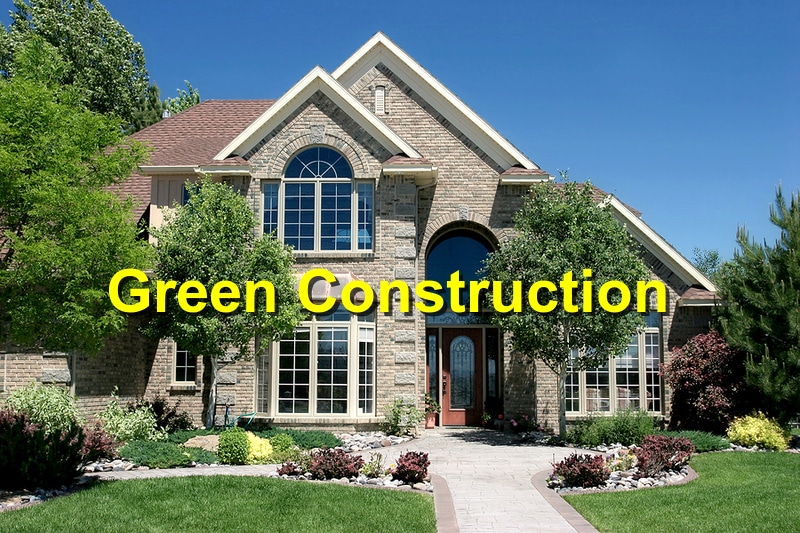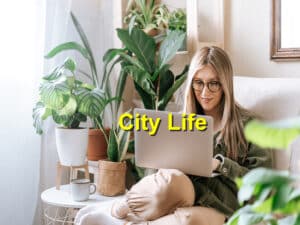The construction industry is undergoing a transformative shift toward sustainability, with green construction innovations leading the way. These advancements not only reduce environmental impact but also create healthier, more energy-efficient spaces. From using sustainable materials to integrating smart technologies, the future of construction is increasingly focused on eco-friendly practices. Here are some of the top innovations in green construction that are shaping the industry.
1. Sustainable Building Materials
One of the key innovations in green construction is the use of sustainable materials. These materials minimize waste, reduce carbon emissions, and conserve natural resources. Some examples include:
- Recycled Materials: Builders are increasingly incorporating recycled steel, concrete, and plastic into their projects. Recycled materials reduce the demand for new resources while also minimizing waste.
- Bamboo: Bamboo is gaining popularity as a sustainable alternative to traditional wood. It grows quickly, is highly renewable, and has excellent strength-to-weight ratios, making it ideal for flooring, cabinetry, and even structural components.
- Low-Emission Products: Paints, adhesives, and sealants with low volatile organic compounds (VOCs) are now commonly used in construction. These products improve indoor air quality by reducing harmful emissions.
2. Energy-Efficient Building Designs
Energy-efficient building designs are at the core of green construction. By reducing energy consumption, these designs lower operating costs and minimize a building’s environmental footprint. Key strategies include:
- Passive Solar Design: Passive solar design involves positioning buildings to maximize natural sunlight for heating and lighting. By incorporating large, south-facing windows and using thermal mass materials, buildings can harness the sun’s energy to reduce heating needs.
- Green Roofs and Walls: Green roofs and walls are covered with vegetation that provides insulation, reduces stormwater runoff, and improves air quality. These living systems also help regulate indoor temperatures, reducing the need for heating and cooling.
- High-Efficiency Windows: Modern windows with double or triple glazing, low-emissivity (Low-E) coatings, and insulated frames prevent heat loss in the winter and block heat gain in the summer. This reduces the building’s energy load for heating and cooling.
3. Smart Building Technologies
Technological innovations are revolutionizing how buildings manage energy consumption and reduce waste. Smart building technologies enhance the efficiency of mechanical systems, lighting, and HVAC systems. Some key technologies include:
- Building Automation Systems (BAS): These systems integrate and control various aspects of a building’s operations, including lighting, HVAC, and security. By automating these functions, a BAS optimizes energy use, ensuring that systems run efficiently and only when needed.
- Smart Thermostats: Smart thermostats allow users to control heating and cooling systems remotely. They can learn a building’s usage patterns and automatically adjust temperatures to maximize comfort while minimizing energy waste.
- LED Lighting: Energy-efficient LED lighting consumes significantly less energy than traditional incandescent bulbs. Many modern LED systems also feature dimming and motion-sensor capabilities, further reducing energy consumption.
4. Renewable Energy Integration
Integrating renewable energy sources into buildings is another significant trend in green construction. Solar power, wind energy, and geothermal systems are being used to reduce reliance on non-renewable energy sources and lower carbon footprints. Examples of renewable energy applications in construction include:
- Solar Panels: Photovoltaic (PV) solar panels convert sunlight into electricity, providing a clean, renewable energy source. Many new buildings incorporate solar panels on roofs or facades to generate electricity and even sell excess energy back to the grid.
- Geothermal Heating and Cooling: Geothermal systems tap into the Earth’s natural heat to regulate indoor temperatures. These systems are highly efficient, providing heating in the winter and cooling in the summer while consuming far less energy than traditional HVAC systems.
- Wind Turbines: In areas with consistent wind patterns, small-scale wind turbines can generate electricity for buildings. These turbines are often installed on rooftops or in nearby open spaces, providing a renewable energy source.
5. Water Conservation Techniques
Water conservation is another critical aspect of green construction. Builders are increasingly implementing strategies that reduce water consumption and promote efficient water use, including:
- Rainwater Harvesting: Rainwater harvesting systems collect and store rainwater for reuse in irrigation, flushing toilets, and other non-potable applications. This reduces the demand for municipal water and helps conserve a precious resource.
- Greywater Recycling: Greywater recycling systems collect water from sinks, showers, and washing machines, treating it for reuse in landscaping or toilets. This minimizes the amount of wastewater generated and reduces overall water consumption.
- Low-Flow Fixtures: Installing low-flow faucets, showerheads, and toilets reduces water usage without sacrificing performance. These fixtures help buildings conserve water and lower utility bills.
6. Prefabrication and Modular Construction
Prefabrication and modular construction are gaining traction as eco-friendly building methods. These processes involve constructing building components off-site in a controlled environment and then assembling them on-site. The benefits of this approach include:
- Reduced Waste: Building components in a factory setting allows for more precise measurements and efficient material usage, leading to less waste.
- Lower Energy Consumption: Modular construction reduces the energy required for on-site work, including transportation and equipment use.
- Shorter Construction Times: Prefabrication speeds up the construction process, which reduces the environmental impact of prolonged on-site activity, including noise pollution and emissions.
7. Zero-Energy and Net-Zero Buildings
The concept of zero-energy or net-zero buildings is a growing trend in green construction. These buildings generate as much energy as they consume over the course of a year, often through a combination of energy-efficient designs and renewable energy systems. Key characteristics of zero-energy buildings include:
- Super-Insulated Building Envelopes: High levels of insulation in walls, roofs, and floors prevent heat loss and minimize energy consumption for heating and cooling.
- On-Site Renewable Energy Production: Solar panels, wind turbines, and other renewable energy systems provide the energy needed to power the building, reducing reliance on external energy sources.
- Efficient Mechanical Systems: Advanced HVAC, lighting, and water heating systems minimize energy use, helping the building maintain its net-zero energy balance.
Conclusion
Green construction is paving the way for a more sustainable future, with innovations that reduce environmental impact and enhance building performance. From using sustainable materials and renewable energy sources to implementing smart technologies and water conservation strategies, the construction industry is embracing eco-friendly practices. These innovations not only benefit the environment but also create healthier, more energy-efficient buildings for occupants. As the demand for sustainable construction grows, so will the innovations that drive it forward, making green construction the standard for the future.
References: Fall Home, House Beautiful




